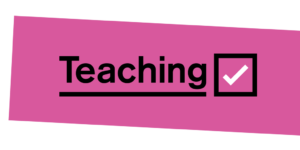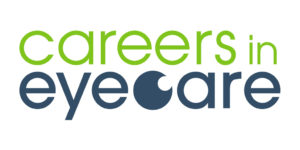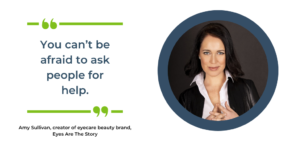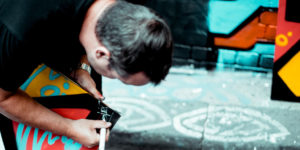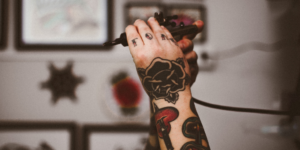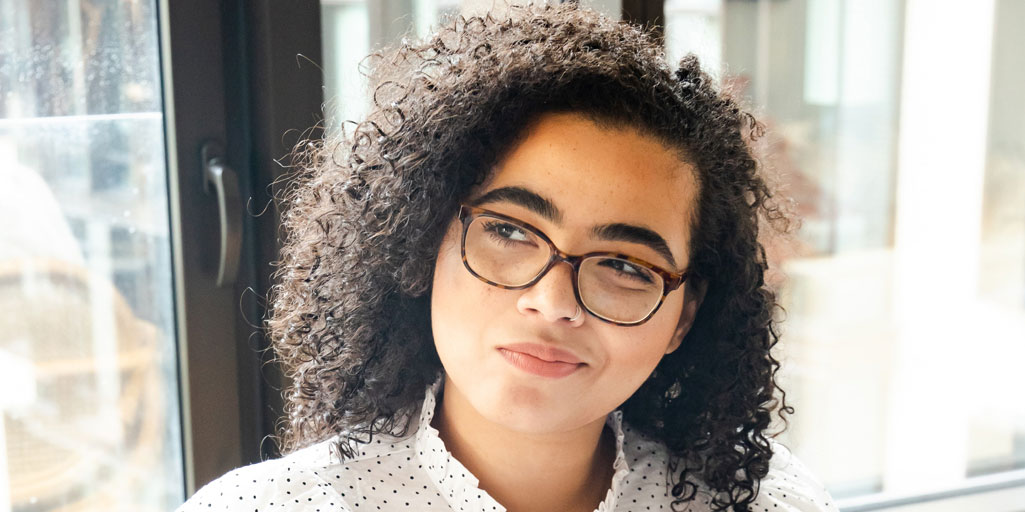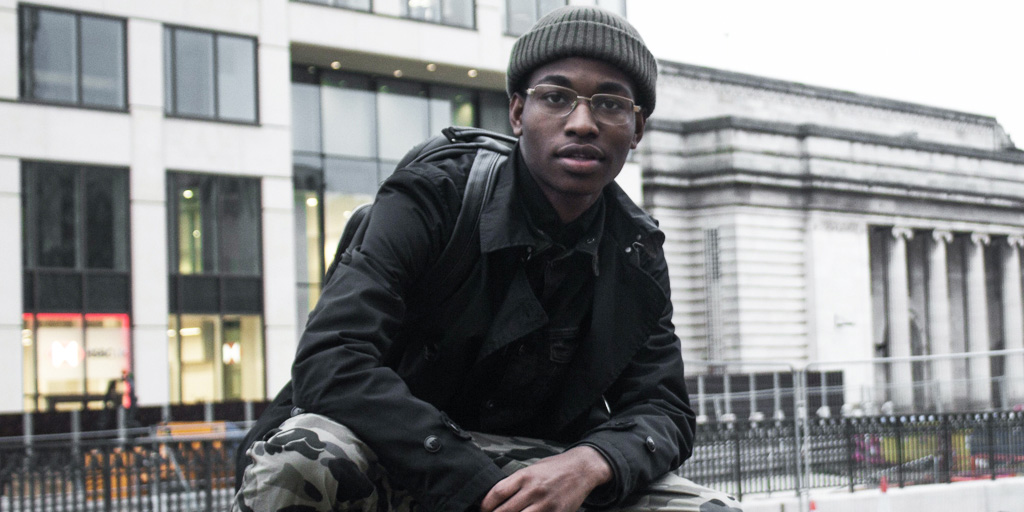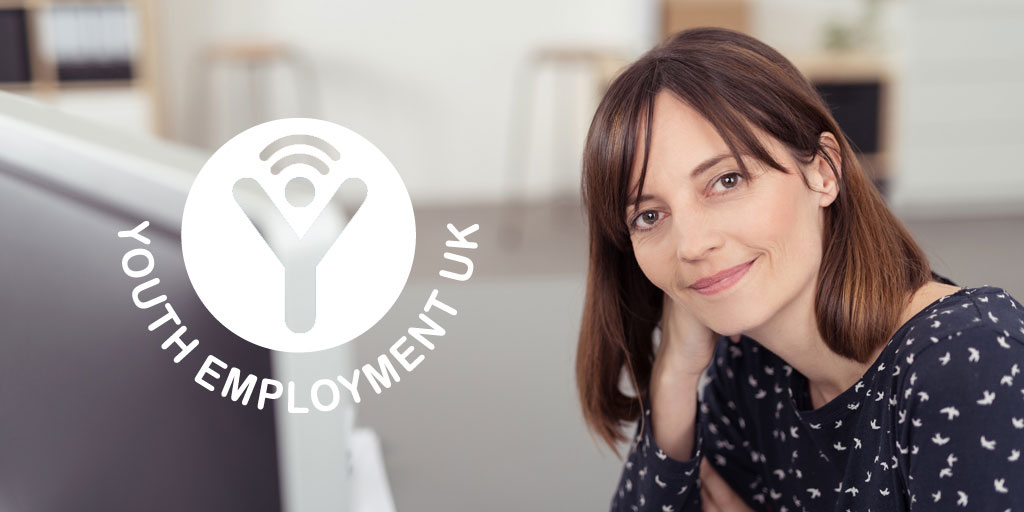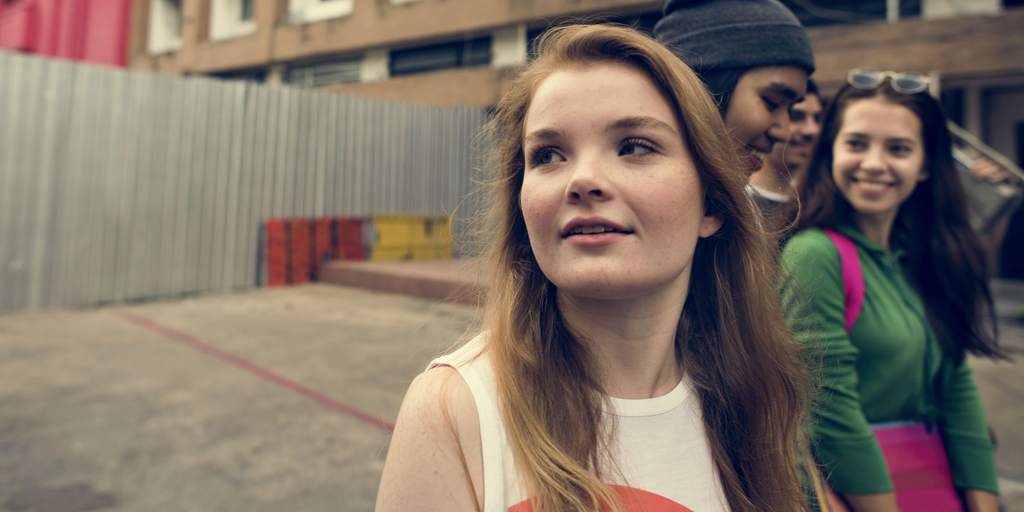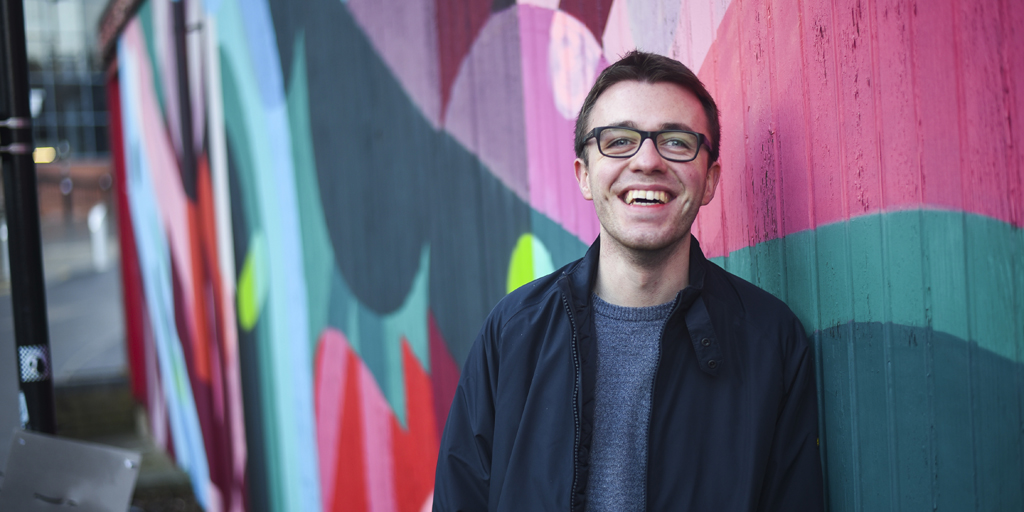
Graphic Designer careers guide & job profile
Famous graphic designer Milton Glaser once said there are three responses to a piece of design: yes, no, and WOW!
Graphic design careers mean you use art to make people feel.
If you can think visually, you could work on anything from branding and ad posters to website designs and book covers as a graphic designer. You’ll know that a picture can say a thousand words, and you’ll have lots of creative tricks up your sleeve to help a client or employer visually get their message across.
Do you need to know how to draw? It helps. You may not be using old-fashioned tools like paint and pencils all that often, and most graphic design work is created with computer software, but it will still help if you can draw rough sketches.
There are so many choices to make about a piece of design, from the colours used to what kind of font (or lettering) is used and why. Does the colour red make people feel frightened or full of energy? Does an old-fashioned font make people trust a product more, or make them feel it is out of touch? Does the image need to be exciting and abstract, or a photo or painting to get the message across? If the picture is a photo, should it feature a person’s face? Should it be a close-up, or shot from further away to display a whole scene?
Graphic design careers mean you get PAID for art. Know your worth.
Questions, questions. As a graphic designer you could work with big or small companies for all kinds of products and services including:
- Product packaging
- Websites, apps, books and magazines
- Visual branding for a company (e.g. creating their logo and saying what colours they should use in their marketing, packaging or product information)
- Advertising
- Video games
With your graphic design skills you could work in marketing, publishing, production, web and game design – and you could work in print or online.
You could work for an employer, or for an agency with lots of different clients needing design work done, or you could go freelance one day once you build experience. Then you can have clients of your own.
How much money can you earn as a graphic designer?
These LMI Job Trends give you a sneak peek of how much you could earn starting out for this career, and how much your salary could grow with experience.
Average salary for graphic designer jobs
Recent labour market information says you can earn on average between £16,000 and £50,000 a year as a graphic designer in the UK.
Your starting salary can vary because of factors like level of experience, training, location or the size of the company. Your salary as a graphic designer will increase over time as you build skills, knowledge, and experience.
Creative Career FAQs & Insights

Is there something you’d like to know about creative careers?
Skills you need to become a graphic designer
Useful skills to put in your CV:
- Design skills and attention to details
- IT skills (you’ll be most likely using design software)
- Self-belief skills (being able to show your initiative in proposing new visual concepts and ideas for people to consider)
- organisation skills – You need a logical approach to what you do, and your work will consist of lots of data analysis and breaking big problems down into manageable chunks. Good organisation will help with this.
Top Skills-boosting Tip
Teamworking skills will help you pick up new training and follow brief. You may be working with a team on a design project, not just on your own.
How Do You Get These Skills?
Vocational qualifications and work experience will help you build these skills over time.

Build Your Skills With the FREE Young Professional Programme
What Qualifications & Training Do You Need For Graphics Design Careers?
School, college and training
You don’t need any formal qualifications to become a graphic designer, but qualifications can help you grow your design skills.
Graphic Design Foundation Courses
Students taking the academic route often start off with a foundation course in art and design which results in a diploma and usually takes a year to complete. Foundation degrees are also available which can take two years of part-time study to complete. As well as getting a grounding in the skills and business areas related to art and design, a foundation course is a way for students to build up a portfolio of their work to show employers what they can do.
Example entry requirements for art and design courses:
- BTEC national diploma or certificate – four GCSEs or the equivalent with a typical passing grade of 9-4
- HNC/HND – one A-level or the equivalent (such as a BTEC national diploma) in an art and design subject
- Degree – five GCSEs or the equivalent along with two A-levels or the equivalent, one of which should be in an art and design subject.
Building up a Graphic Design Portfolio
A portfolio is like a visual CV of work you have done that shows your creativity, skill and style. You may develop a unique style that people link with your work, but you can also show your flexibility in being able to design in different styles that match what an employer is looking for. As an example, think of a famous cartoon character. Any official merchandise needs to show the character in the exact same style, whether the cartoon is appearing on a lunch box or stationery or being re-created as a toy action figure. This is known as ‘house style’ and can be a useful skill for graphic designers to demonstrate they have.
T-Levels
T-Levels are a choice for learners after GCSEs alongside apprenticeships and A-levels.
You can do Digital Design and Development T Levels. They are a high-quality, work-focused alternative to A Levels for young people once they’ve completed their GCSEs. You’ll spend 80% of your time in the classroom and 20% on a 45 day placement with an employer. T-Levels offer new routes to employment or further learning for young people looking to begin a career in the digital design sector.
BTECs
As an alternative to GCSEs and A-Levels, you can do BTECs from the age of 16. A BTEC in Art and Design gives you the specialist knowledge and technical skills to progress into, for example, an apprenticeship or employment. With a BTEC in Art and Design, you’ll gain valuable hands-on experience along with all the support, guidance and training you need.
Apprenticeships
An apprenticeship is a scheme where you train while earning a starting salary.
With an apprenticeship (or advanced apprenticeship) you’ll have a paid job with an employer that includes structured training and learning. This training leads to an official qualification that’s recognised by employers as an industry standard.
Some graphic designers get started in this career through an apprenticeship. You’ll typically get structured training while you work and earn, and industry-recognised qualifications. There are many art and design apprenticeships available, and not all of them need you to have qualifications to apply.
While at school or college, speak to your careers advisor about useful training and/or courses for you to take and find out more about the types of career routes available.
You can seek out graphic design apprenticeships with organisations like Find an Apprenticeship.
University degrees and graduates
Graphic designers might have a diploma or degree in a related subject like graphic design, illustration, fine art, visual communication or product design. Many universities and art colleges across the UK offer courses.
UCAS has more information on degree courses and entry requirements.
Some courses include a year in industry – or you could organise your own work placement in a company. You might also be able to join a company’s graduate trainee scheme if you have a degree in a relevant subject.
Career Progression
With time and experience you could become a senior designer leading a team, a creative director overseeing a project, or move into management in a variety of ways.
When you’ve built up enough experience you could go freelance to have clients of your own, or set up your own design agency.
You could specialise in particular fields like web design or packaging, or work across a number of areas. You could learn whether you prefer to work in one company, or work for an agency handling lots of different clients and projects.
What Work Experience Do You Need For Graphic Design Jobs?
Work Experience Tips
It can help you decide if this is the right career for you if you have previously done work experience in a digital or design-based role. Work experience in a creative environment can also help you build useful skills.
Any work experience where you have demonstrated your cybersecurity skills or digital/design skills can help your application.
Examples of relevant work experience include:
- Work shadowing (even if it’s just for a day)
- Work placements in a company
- Work experience placements on a college or university course
If people compliment you on your designs, consider researching the online stores out there that can turn your images into T-shirts, cards, magnets and anything else. You may not get rich, but employers will appreciate the self-belief skills and self-management skills you have shown in taking a business approach to your designs. Do your research of all the online stores out there and make sure you pick a store where they will only create the product if someone places an order for it, so you don’t end up out of pocket.
If you draw, keep drawing. Draw in different styles, if you can. On social media you can hook up with lots of people creating fan art or sharing their ideas and challenges in creating designs. Exploring that community will help you feel inspired to create more often, to share your work and to learn from other people’s design tips (and things they wish they’d done differently).
A lot of graphic design is done digitally these days using software like Adobe Illustrator/Photoshop and CorelDRAW. Pick up free trials of software like CorelDRAW and also see what other totally free software is out there (like Inkscape, which lets you design vector graphics and is a free alternative to Illustrator or CorelDRAW). If you can build experience of using the software that employers use in their own offices, it looks great on your CV. It will also help you settle into a new job more quickly. Even if you’re using a piece of design software that isn’t used much in the business world, it’s still great experience. Maybe fewer employers use something like Inkscape or Vectr, but once you’ve learned what vector graphics are and how you can use them to create visually, you’ve learned a really useful graphic design skill that you can improve over time. Knowing about something like vector graphics means you just have to learn how to use new software if you get a new job, but you already know the kinds of things it can do.
Create a personal blog with a professional feel. This is a chance to show off your website design, and your understanding of visual design and typography (or the use of lettering to create a look and feel). You can host your portfolio on your blog, or any visual works in progress. And you can include a link to your online store selling products with your designs, of course!
Volunteering Tips
Having a keen interest in digital software and how computers do things is important in this career, because you’ll often need to explore graphic design and meet creative briefs for online campaigns.
If you’re a young designer looking to get your first client or opportunity, volunteering your time for free can help you make work connections and build up your portfolio.
You are putting your time and energy into this, and your work should be respected even if it’s not being paid for.
Consider researching causes, social action campaigns and non-profit ventures that match your interests, and offer to volunteer for them. If no-one in the organisation is getting paid, or is getting paid very little, then they can’t afford to hire a professional designer and might be grateful for a volunteer designer who is ready to try their best. You can, of course, also volunteer for friends and family projects!
Volunteering can be great because it will teach you how to work with clients, and get a good understanding of the kinds of creative briefs and challenges you might face in your career. Volunteering and personal projects will also look really good on your CV.
You can start volunteering in college or university if you haven’t already. Student clubs will need promotion, and you can help. There may be volunteer-run student websites, fanzines and events for you to get involved with on the design side.
Volunteering can help you branch out your skills to meet the needs of clients. Perhaps you focus on digital but you’ve been asked to make some printed flyers – or you might be asked to design a screen-printed t-shirt.
Quite often, volunteering means you get more creative freedom. If they’re not paying for your design skills, they often won’t even quite know what they want, and could be grateful for your vision and ideas.
What Does A Graphic Designer Do?
- Talking with clients and team leaders about what’s needed for a design project
- Coming up with creative ideas which you may need to present as rough drafts
- Working out deadlines and budgets
- Creating final designs, usually using digital software
- Making presentations to clients so they can give feedback for changes or approve a final design
- Keeping up with design trends and the latest design software.
How To Find Graphic Design Jobs: Next Steps
To find jobs for young people in this role, search on jobs boards for early career roles and opportunities with these words in the title:
- Trainee graphic designer
- Graphic design apprenticeships
- Creative apprentice
- Artworker apprentice
- Junior graphic designer
You can also take a look at our database of local opportunities to see if there are any relevant jobs, work placements, or careers events and workshops to help you get started. Create Your Future!
Get Into Creative Careers With Youth-Friendly Employers
These employers and organisations are here to help. They care about your potential and desire to learn, not just your qualifications and experience. They may be able to offer traineeships, apprenticeships, graduate schemes, first jobs, careers advice, wellbeing support and much more.
Creative Career Tips & Opportunities
Creative and Design Career Guides
View job descriptions with average UK salary, useful qualifications and a variety of routes into this career.
See All Our Youth-Friendly Employers
London tech careers are in YOUR reach.
Salary? Jobs? Training? You got it. No experience? No problem. You've got the power. We'll give you the support!

























YES! I Want More Free Careers Help...
So what are you waiting for? Grab your future.

